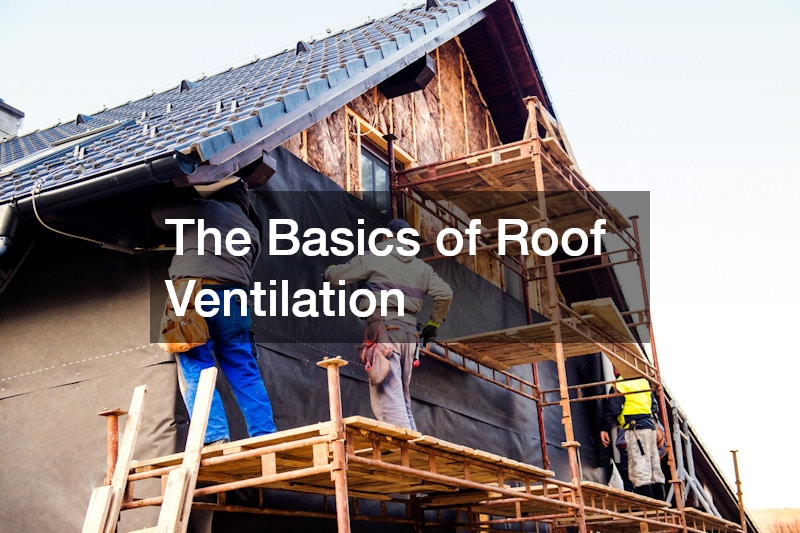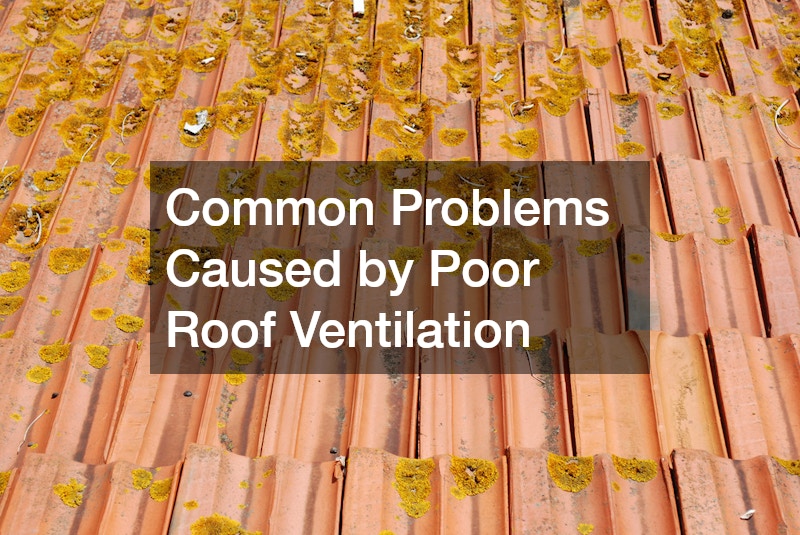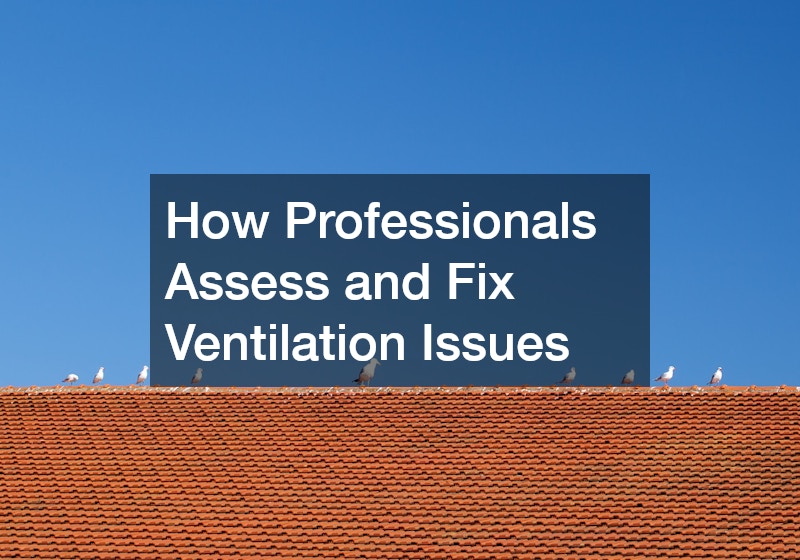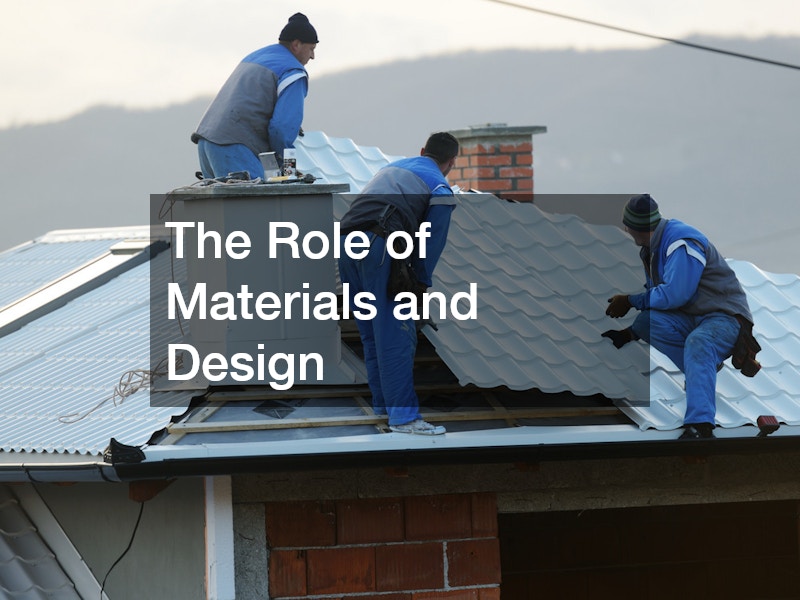Many homeowners assume their roof only protects their home from the elements, but few realize just how critical airflow beneath that roof truly is. Proper roof ventilation is the unseen system that keeps your home healthy, efficient, and long-lasting. Without it, even the most durable roofing materials can deteriorate faster than expected, leading to higher repair costs and indoor discomfort.
Imagine walking into your attic on a summer afternoon and feeling trapped heat that could rival outdoor temperatures. Or picture condensation forming on the underside of your roof deck in winter, causing mold and wood rot. Both scenarios stem from poor ventilation — a hidden yet preventable issue.
In this article, homeowners will learn why roof ventilation is essential, how it works, what happens when it’s neglected, and why consulting a professional roofing company is vital for maintaining a safe, energy-efficient home.

The Basics of Roof Ventilation
How Roof Ventilation Works
At its core, roof ventilation is about balance. Fresh air enters through lower intake vents, usually located under the eaves, while warm, moist air exits through exhaust vents near the roof’s peak. This continuous airflow regulates temperature and humidity levels in the attic, preventing extreme heat buildup or condensation.
A well-designed ventilation system maintains equilibrium year-round. In summer, it keeps attic temperatures lower, reducing strain on air conditioning systems. In winter, it minimizes moisture accumulation that can damage insulation and rafters. Without it, trapped heat and humidity create an environment ripe for mold, wood rot, and premature aging of roofing materials.
Types of Roof Ventilation Systems
There are two main categories of roof ventilation systems: passive and active.
Passive systems rely on natural airflow and temperature differences to move air. These include ridge vents, gable vents, and soffit vents. They’re often used in residential homes because they’re quiet, energy-free, and effective when properly installed.
Active systems, on the other hand, use mechanical assistance—such as turbine vents or powered attic fans—to push warm air out. Active systems are ideal for homes in hot or humid climates or attics with limited natural airflow.
Choosing between these systems depends on your roof’s design, slope, and climate. That’s why local roofing companiesoften evaluate these factors carefully before recommending a solution. A well-calculated ventilation plan ensures your home remains efficient and structurally sound for decades.
Why Roof Ventilation is So Important
Extends the Lifespan of Your Roof
Your roof is constantly exposed to sunlight, rain, and changing temperatures. Without proper roof ventilation, trapped heat and moisture can warp decking, crack shingles, and accelerate aging. Over time, this can lead to leaks, weakened structures, and expensive replacement costs.
By maintaining consistent airflow, ventilation prevents these conditions from forming in the first place. In essence, it acts as your roof’s “breathing system,” protecting materials and ensuring longevity. When paired with professional roof replacement services, the benefits are maximized through improved design and quality installation.
Prevents Moisture Damage and Mold Growth
Condensation forms when warm, moist indoor air meets a cold roof surface. This phenomenon is common in winter but can occur year-round in humid regions. Poor roof ventilation traps this moisture inside the attic, leading to rot, insulation damage, and unhealthy mold growth.
Moisture problems can start small—a few damp patches or a musty odor—but quickly escalate. Once mold develops, remediation becomes costly and labor-intensive. Adequate airflow eliminates excess humidity, preserving both the home’s structure and indoor air quality.
Improves Energy Efficiency
Temperature regulation is another critical advantage of good roof ventilation. When attic temperatures climb, heat radiates downward into living spaces. This forces air conditioning units to work harder, consuming more energy and raising utility bills.
A balanced ventilation system maintains a cooler attic, allowing HVAC systems to operate more efficiently. In winter, it prevents warm air from getting trapped and creating uneven heating. Many HVAC contractors recommend homeowners check their roof ventilation before upgrading air systems—it’s often the missing link in achieving true energy efficiency.

Common Problems Caused by Poor Roof Ventilation
Ice Dams in Winter
In colder regions, improper roof ventilation can lead to ice dams—thick ridges of ice forming at the roof’s edge. They develop when heat escapes from the attic, melting snow that refreezes along the eaves. The resulting ice blocks proper drainage, allowing melted water to seep beneath shingles.
This can cause significant damage to insulation, drywall, and ceilings. Proper airflow keeps roof temperatures even, preventing melting and freezing cycles that cause ice dams.
Excessive Heat in Summer
In summer, attic temperatures can easily exceed 150°F without adequate roof ventilation. This excessive heat cooks shingles from underneath, leading to premature failure. It also increases interior temperatures, pushing cooling systems to their limits.
Even homeowners with energy-efficient materials like metal roofs can suffer from heat buildup if ventilation is lacking. Consulting a metal roofing contractor ensures your roofing system includes adequate airflow features during installation.
Damaged Insulation and Higher Humidity Levels
Poor roof ventilation traps moisture that degrades insulation over time. Damp insulation loses its effectiveness, allowing heat transfer between the attic and living areas. This not only raises energy bills but also compromises indoor comfort and air quality.
Humidity-related issues can spread throughout the home, leading to condensation on windows and walls. The solution lies in maintaining the right airflow ratio between intake and exhaust vents—a task best handled by trained professionals.
Signs Your Roof May Have Ventilation Issues
Homeowners can often spot early warning signs of poor roof ventilation before major damage occurs. Here are several indicators to watch for:
-
Curling, cracking, or blistering shingles
-
Rusted nails or metal components inside the attic
-
Mold or mildew on rafters or insulation
-
Unexplained musty odors
-
Uneven indoor temperatures or excessive humidity
-
Rising energy bills without increased usage
If any of these issues appear, it’s time to contact a roofing company for a comprehensive inspection. Early intervention can prevent costly roof repairs or full replacements down the line.

How Professionals Assess and Fix Ventilation Issues
Inspection and Assessment
Professional roofers begin with a detailed attic inspection. They evaluate insulation depth, air intake, exhaust locations, and potential blockages. They may use thermal imaging to detect heat retention or moisture sensors to locate trapped humidity.
Understanding how air moves through your attic is crucial to designing an effective roof ventilation system. Proper diagnostics ensure every vent, ridge, and opening works together as intended.
Upgrading Ventilation Systems
After assessment, experts may recommend upgrades such as adding ridge vents, expanding soffit openings, or installing powered fans. These solutions improve airflow and reduce heat or moisture buildup.
A qualified team will tailor ventilation improvements to the specific design and materials of your roof. For example, homes with low slopes may need mechanical venting, while steep designs can rely on passive airflow. Reliable local roofers understand how to balance aesthetics and functionality.
The Importance of Professional Installation
DIY roof modifications can lead to leaks, energy inefficiency, or even voided warranties. That’s why ventilation improvements should always be handled by professionals. A licensed crew ensures vents are correctly positioned and sealed, maintaining your roof’s integrity.
When combined with quality roof repairs, proper installation prevents issues that could otherwise shorten your roof’s lifespan. The craftsmanship and precision provided by the best roofing companies guarantee lasting performance and peace of mind.
Additional Tips for Maintaining Proper Ventilation
Even the best roof ventilation system requires maintenance to stay effective. Homeowners can take several steps to keep airflow consistent:
-
Schedule annual roof inspections, especially after severe storms.
-
Keep soffit vents clear of insulation, dust, or debris.
-
Trim overhanging branches that block airflow or drop leaves into vents.
-
Regularly check attic insulation for signs of dampness or mold.
-
Request roof estimates from professionals before major upgrades or replacements.
Routine care and inspections from experienced contractors ensure your ventilation continues performing optimally for years.

The Role of Materials and Design
Different roofing materials affect how roof ventilation performs. Asphalt shingles, for example, retain more heat than metal or tile, demanding greater airflow. Metal roofs, conversely, reflect heat efficiently but still require circulation to prevent condensation.
The architectural design also influences ventilation. Cathedral ceilings, dormers, and flat roofs each require unique venting strategies. Partnering with local roofing companies familiar with diverse designs guarantees optimal results.
Architectural trends increasingly favor systems that integrate ventilation directly into roof structures. These innovations offer clean aesthetics and improved energy performance. Properly balanced airflow supports both function and curb appeal.
Energy Efficiency and Environmental Impact
Energy costs continue to rise, and efficient roof ventilation is one of the simplest ways to reduce them. When your attic remains cooler in summer, less energy is needed to maintain indoor comfort.
Moreover, improved ventilation extends the lifespan of roofing materials, reducing waste and replacement frequency. This makes it a sustainable choice for eco-conscious homeowners.
Combined with reflective coatings or cool-roof technology, effective ventilation transforms your home into an energy-efficient system that benefits both your wallet and the environment.
Homeowners often pair these upgrades with other roofing services, such as re-shingling, insulation replacement, or attic sealing, to achieve a complete performance boost.
Costs and Long-Term Value
Proper roof ventilation isn’t an expense—it’s an investment in longevity. The upfront cost of installing or upgrading vents pales in comparison to the expenses caused by moisture damage, premature aging, or structural repairs.
By maintaining stable attic conditions, you extend the life of your roof and lower energy bills year after year. Additionally, a home with a well-ventilated roof commands higher resale value since potential buyers recognize its durability and efficiency.
Homeowners considering major renovations often bundle ventilation improvements with roof replacement services, maximizing value during one comprehensive project.
Maintenance and Seasonal Care
Seasonal weather changes put unique stress on your roof. In summer, excess heat tests ventilation efficiency, while in winter, moisture and insulation balance become the main concern.
Schedule biannual inspections—preferably before winter and after summer—to ensure your system remains balanced. During these checkups, professionals verify that intake vents are open and exhaust vents are unobstructed.
Preventative maintenance also includes checking for animal nests or debris blocking airflow. Addressing small issues promptly avoids costly future damage. Trusted contractors offering roof estimates can help homeowners plan ahead for both maintenance and upgrades.
Safety, Comfort, and Home Value
Home comfort goes beyond temperature control. Proper roof ventilation improves indoor air quality by expelling stale air and moisture that can lead to allergies or respiratory problems. A fresh, well-ventilated attic means cleaner, healthier air throughout the entire home.
Moreover, consistent temperatures reduce expansion and contraction in wood framing, preserving the structural stability of your property. The financial benefits are substantial—less maintenance, fewer repairs, and higher property value.
Professional roof repairs and ventilation improvements create a synergy that safeguards both your investment and your comfort.
How to Choose the Right Contractor
Selecting the right professional ensures that your roof ventilation project succeeds from start to finish. Look for certified contractors who understand airflow dynamics, insulation systems, and roofing materials.
Ask for references, verify insurance, and confirm their experience with ventilation systems. Transparent communication and accurate roof estimates are signs of a trustworthy contractor.
Many homeowners turn to the best roofing companies for guidance on design, installation, and maintenance. These firms often provide warranties and post-installation support, ensuring your investment remains protected.
When to Upgrade Your System
If your attic feels excessively hot, you notice moisture stains, or your energy bills have spiked, it may be time to evaluate your roof ventilation. Upgrading ventilation systems is often easier than homeowners realize, especially when combined with other roof work.
A reliable roofing company can inspect your current setup, identify deficiencies, and propose solutions that balance airflow effectively. Whether it’s adding ridge vents, powered fans, or adjusting intake ratios, these upgrades yield immediate comfort and long-term protection.
Many homeowners choose to update ventilation while investing in roof replacement services, maximizing efficiency and minimizing disruption.
Proper roof ventilation may not be the most visible aspect of home design, but it’s undeniably one of the most important. It affects everything from energy efficiency and indoor comfort to structural durability and long-term value.
Homeowners who take the time to understand and maintain ventilation reap the rewards: lower utility bills, a longer-lasting roof, and a healthier living environment. The investment in proper airflow pays dividends in comfort and confidence.
When planning upgrades or new installations, collaborate with professionals who understand both design and performance. Whether it’s consulting local roofing companies or obtaining detailed roof estimates, expert guidance ensures your system functions flawlessly.
Partnering with a reputable roofing company ensures your home’s ventilation system remains balanced and efficient, protecting your investment for years to come.



